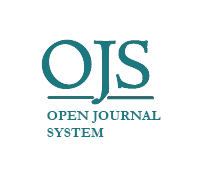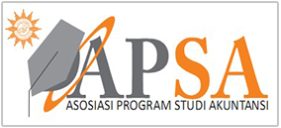Financial Distress Dan Opini Audit Terkait Going Concern: Moderasi Penerapan Turnaround Strategy
DOI:
https://doi.org/10.22219/jrak.v13i1.25656Keywords:
Audit Opinion, Financial Distress, Going Concern, Turnaround StrategyAbstract
Purpose: The auditor is responsible for assessing the appropriateness of using the going concern assumption and providing conclusions regarding material uncertainties that cause business continuity to be disrupted. The purpose of this research is to assess the direct and indirect effect of financial distress on the providing of audit opinion related to going concern through the turnaround strategy plan.
Methodology/approach: The sample used in this study consisted of 46 energy sector companies listed on the IDX during 2015 – 2019. The hypothesis testing in this study used PLS-SEM. The method used in this research is quantitative method, descriptive statistics with secondary data as a data source.
Findings: The results of the study showed that financial distress has a significant direct or indirect effect on the providing of audit opinions related to going concern. Financial distress has a greater influence on the provision of an audit opinion regarding going concern if it is mediated by the management plan. Simultaneously financial distress and turnaround strategy plan are able to explain the audit opinion related to going concern by 66.6%, while the remaining 33.4% is explained by other factors not included in this study.
Practical implications: This research proves that the auditor has considered material doubts about the company's financial factors and the plan to implement a turnaround strategy in providing audit opinions related to going concern.
Originality/value: Auditor skepticism in providing audit opinions by considering the management turnaround strategy plan.
Downloads
References
Abadleh, A. (2018). Corporate Decline and Turnaround Strategies.
Altman, E. L., Hartzell, J., & Peck, M. (1998). Emerging Market Corporate Bonds - a scoring system. Emerging Market Capital Flows, 391-400.
Bava, F., & Gromis, M. (2018). ISA 570: Italian Auditors’ and Academics’ Perceptions of the Going Concern Opinion. Australian Accounting Review.
Behn, B. K., Kaplan, S. E., & Krumwiede, K. R. (2001). Further Evidence on the Auditor’s Going-Concern Report: The Influence of Management Plans. AUDITING: A Journal of Practice & Theory, 13 - 28.
Ghozali, I. (2014). Structural Equation Modeling Metode Alternatif Dengan Partial Least Square (PLS). Semarang: Universitas Dipenogoro Semarang.
Ghozali, I. (2016). Aplikasi Analisis Multivariate dengan Program IBM SPSS 25. Semarang: Badan Penerbit Universitas Dipenogoro.
Hair Jr., J. F. et al. (1998). Multivariate Data Analysis with Readings. Englewood Cliffs, NJ: Prentice-Hall.
Haron, H., Hartadi, B., Ansari, M., & Ismail, I. (2009). Factor Influencing Auditors' Going Concern Opinion. Asian Academy of Management Journal, 1 - 19.
IAPI. (2021). Standar Audit 570 Kelangsungan Usaha. Standar Profesional Akuntan Publik.
Kakunsi, & Prayanthi. (2017). The Altman Model and Auditor’s Opinion About Going Concern of the Companies. Science Journal of Business and Management, 189 - 193.
Kontan.co.id. (2015, Agustus 04). Investasi - Kinerja pertambangan masih bertumbanga. Retrieved from Kontan.co.id: https://investasi.kontan.co.id/news/kinerja-pertambangan-masih-bertumbangan
Kristanti, F. T. (2019). Financial Distress: Teori dan Perkembangannya Dalam Konteks Indonesia. Malang: Inteligensia Media.
Kuruppu, N., Laswad, F., & Oyelere, P. (2012). Assessing going concern: The practical value of corporate failure models and auditors' perceptions. Pacific Accounting Review, 33-50.
Lai, J., & Sudarsanam, S. (1997). Corporate Restructuring in Response to Performance. European Finance Review, 197–233.
Lie, C., Wardani, R., & Pikir, T. W. (2016). Pengaruh Likuiditas, Solvabilitas, Profitabilitas, dan Rencana Manajemen terhadap Opini Audit Going Concern (Studi Empiris Perusahaan Manufaktur di BEI). Berkala Akuntansi dan Keuangan Indonesia, 84-205.
Neraca. (2016). Harian Ekonomi Neraga. Retrieved from Lantaran Kelamaan Disuspensi - BEI Mengancam Bakal Delisting 10 Emiten: https://www.neraca.co.id/article/65480/lantaran-kelamaan-disuspensi-bei-mengancam-bakal-delisting-10-emiten
Platt, M. B., & Platt, H. (2002). Predicting corporate financial distress: Reflections on choice-based sample bias. Journal of Economics and Finance , 184-199.
Riley, R., Behn, B. K., & Pany, K. (2000). Management Plan and SAS no.59 Resolution. Advances in Accounting, Vol. 17, 187-203.
Sarwono, J., & Narimawati, U. (2015). Membuat Skripsi, Tesis, dan Disertasi dengan Partial Least Square SEM (PLS-SEM). Yogyakarta: Penerbit Andi.
Schendel, D., Patton, G. R., & Riggs, J. (1976). Corporate turnaround strategies: A study of profit decline and recovery. Journal of General Management.
Setyowati, W. (2013). Strategi manajemen berbasis keuangan sebagai faktor mitigasi dalam penerimaan keputusan opini going concern . Jurnal Ekonomi dan Bisnis, 63-75.
Suhfriahtiningsih, E. (2017). Faktor-Faktor Yang Mempengaruhi Keberhasilan Proses Turnaround Pada Perusahaan Manufaktur. Jurnal Ilmu Dan Riset Akuntansi.
Triyani, A., & Setyahuni, S. W. (2023). How Financial Distress Affect The Coping Strategy? Case of Indonesia MSME's During The Covid-19 Outbreak. Jurnal Reviu Akuntansi dan Keuangan.
Wijayanto, S. H. (2008). Structural Equation Modeling dengan LISREL 8.8. Yogyakarta: Graha Ilmu.
Yulita, K., & Fanani, Z. (2021). The Effect of Innovation Stratgey in the Influence of Managerial Ability on Firm Performance. Jurnal Reviu Akuntansi dan Keuangan, 525-536.
Downloads
Published
Issue
Section
License
Copyright (c) 2023 Pupung Purnamasari, Faradissa Abia Nashwa, Devianti Yunita Harahap, Rini Lestari

This work is licensed under a Creative Commons Attribution-NonCommercial-ShareAlike 4.0 International License.

Jurnal Reviu Akuntansi dan Keuangan is licensed under a Creative Commons Attribution-NonCommercial-ShareAlike 4.0 International License.
Authors who publish with this journal agree to the following terms:
- Authors retain copyright and grant the journal right of first publication with the work simultaneously licensed under a Creative Commons Attribution-NonCommercial-ShareAlike 4.0 International License that allows others to share the work with an acknowledgement of the work's authorship and initial publication in this journal.
- Authors are able to enter into separate, additional contractual arrangements for the non-exclusive distribution of the journal's published version of the work (e.g., post it to an institutional repository or publish it in a book), with an acknowledgement of its initial publication in this journal.
- Authors are permitted and encouraged to post their work online (e.g., in institutional repositories or on their website) prior to and during the submission process, as it can lead to productive exchanges, as well as earlier and greater citation of published work (See The Effect of Open Access).










